Africa’s diverse cultures are reflected not only in language, art, and dress, but also in the remarkable traditions of hair care and styling. While many African hair traditions focus on intricate braiding and adornment, a select few tribes are especially famous for the extraordinary lengths their women’s hair can reach, often as a result of unique cultural practices, natural treatments, and deep-rooted symbolism. Here are the top six African tribes celebrated for their long hair traditions.
1. Mbalantu (Namibia/Angola)
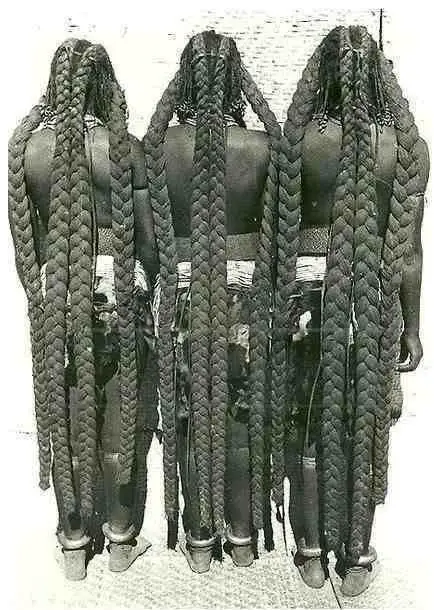
The Mbalantu women of northern Namibia and southern Angola are legendary for their floor-length hair, earning them the nickname “African Rapunzels.” This tradition is not a recent trend but a centuries-old practice deeply embedded in their culture. The journey to long hair begins in childhood, with girls undergoing hair rituals from as young as twelve. Their hair is treated with a paste made from the bark of the “omutyuula” tree mixed with animal fat, which nourishes and strengthens the strands.
At age sixteen, during the “Ohango” ceremony marking a girl’s transition to womanhood, long sinew strands are attached to the hair, sometimes reaching the ground. As women progress through life stages-marriage, motherhood-their hairstyles change, often incorporating elaborate braids and ornaments such as beads and bird plum fruit pips. The hair is a symbol of intelligence, strength, and ancestral connection, and is meticulously cared for with natural blends including cloves, chebe powder, and scented oils. The Mbalantu’s hair culture has not only preserved their heritage but also influenced modern African hair trends.
2. Chebe (Basara Arab, Chad)
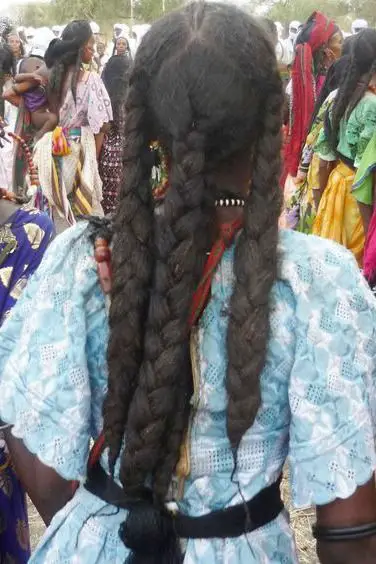
The Basara Arab women of Chad, often referred to as the “Chebe tribe,” are globally recognized for their exceptionally long, thick, and healthy hair, often extending well past their waists. Their secret lies in the use of Chebe powder, an ancient hair care ritual passed down for generations. Chebe powder is made from the seeds of the Croton zambesicus plant, mixed with natural ingredients such as cherry kernels, cloves, and resin.
During the Chebe ritual, older women apply the treatment to younger members. The process involves alternating layers of water and a blend of oils and butters (like shea butter and sesame oil), with Chebe powder spread generously from root to tip. The hair is then meticulously braided into long plaits that often trail down the back. This ritual is not only a beauty practice but also a communal event, reinforcing bonds among women and marking rites of passage such as puberty and motherhood.
Chebe powder does not directly stimulate hair growth but significantly improves length retention by reducing breakage and keeping hair moisturized. The result is hair that is not only long but also strong and lustrous-a visible symbol of femininity and vitality in Basara Arab culture. The tradition of using Chebe powder is so effective that it has recently gained popularity beyond Chad, inspiring natural hair communities worldwide.
3. Himba (Namibia)
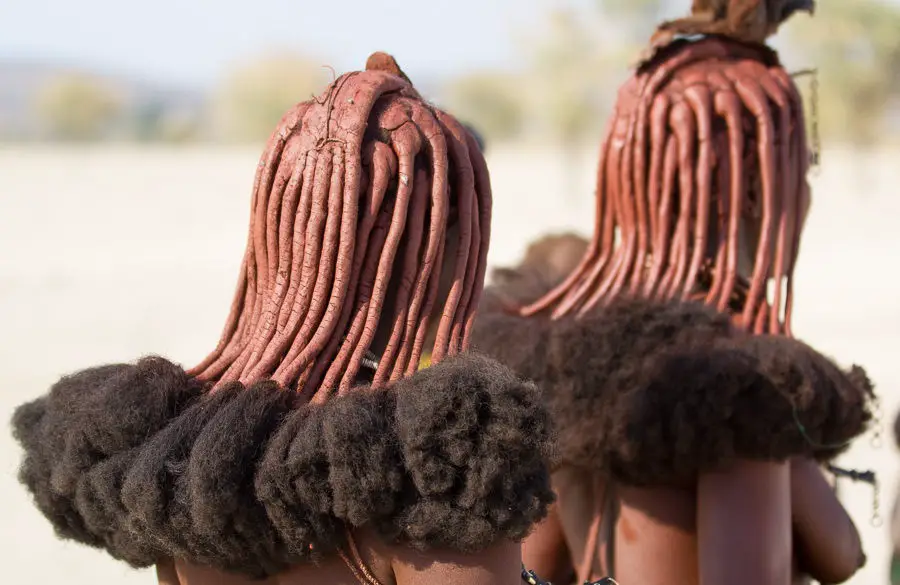
The Himba people of northern Namibia are globally recognized for their striking red-tinged hairstyles. While the focus is often on the color and sculptural form, Himba women also grow their hair long, weaving it into thick, textured plaits known as “ozondato.” These plaits are coated with a mixture of butterfat and ochre pigment, which not only gives the hair its distinctive hue but also protects it from the sun and keeps it strong.
Himba girls start braiding their hair from a young age, and as they mature, the number and style of plaits change to reflect their age and marital status. Married women often wear elaborate headdresses made by adding extensions of goat hair to their own, further increasing the length and volume. The hair, thus, becomes a living record of a woman’s life journey and social standing.
4. Maasai (Kenya/Tanzania)
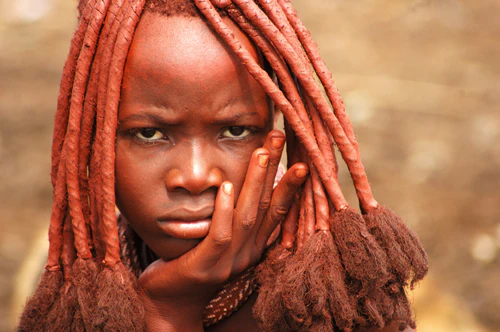
The Maasai people of East Africa are famous for their vibrant culture and distinctive appearance. While Maasai men are known for shaving their heads as a rite of passage, Maasai women often grow their hair long, styling it into fine, elongated braids. These braids are coated with red ochre and animal fat, similar to the Himba, which helps protect the hair and scalp.
For Maasai women, long hair is a sign of femininity and is especially prominent during ceremonies and festivals. The hair is often adorned with colorful beads and jewelry, emphasizing both length and artistry. Although the Maasai hair tradition is less focused on extreme length compared to the Mbalantu, the care and cultural importance placed on long hair is significant.
5. Fulani (West Africa/Sahel Region)
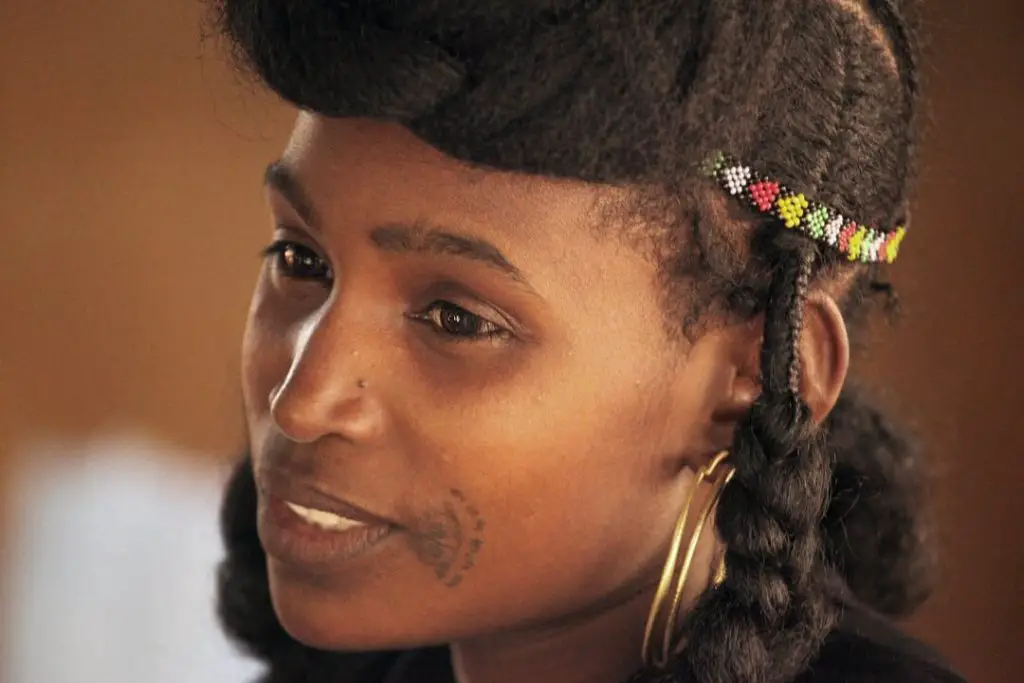
The Fulani, or Fula, are one of Africa’s largest nomadic groups, found across the Sahel and West Africa. Fulani women are renowned for their long, thick hair, which is traditionally styled into five or more lengthy braids. These braids are either left to hang or looped along the sides of the head, with a central coiffure often adorned with beads, cowrie shells, and family heirlooms such as silver coins and amber.
The Fulani hair tradition is more than aesthetic; it is a living heritage. The long braids are a symbol of beauty, status, and familial pride, passed down through generations. The elaborate adornments serve as both decoration and heritage markers, linking women to their lineage and community. Fulani hair care includes the use of natural oils and butters, helping maintain the health and length of their hair despite the harsh Sahelian climate.
6. Igbo (Nigeria)
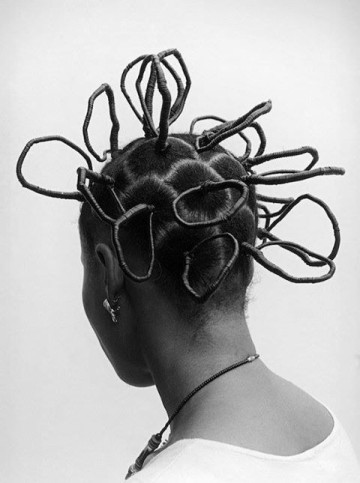
Among the Igbo people of southeastern Nigeria, hair is considered a woman’s crowning glory and a key symbol of beauty, status, and identity. Traditional Igbo hairstyles, such as Ngala, Isi ntukwu (Bantu knots), Isi Owu (threaded styles), and Ojongo (crested styles), are not just decorative but also signify stages of life, marital status, and social rank.
While Igbo hair is typically styled in intricate patterns, many styles involve growing the hair long and then threading, braiding, or twisting it into elaborate forms. The Ngala style, for example, represents pride and beauty, while Isi Owu involves wrapping long hair with black thread, traditionally worn by unmarried girls. Accessories like coral beads, feathers, and shells further enhance the visual impact. The emphasis on hair health and length is supported by the use of natural oils and careful grooming, allowing many Igbo women to maintain impressive hair length beneath their ornate styles.
